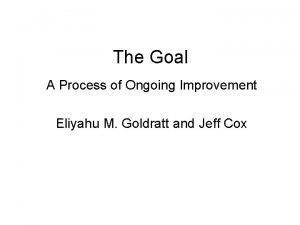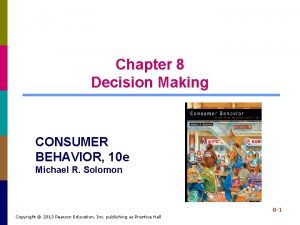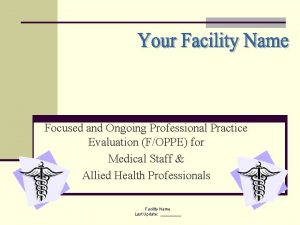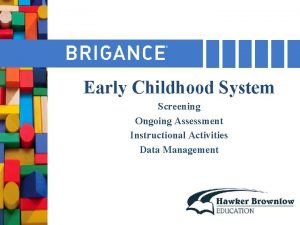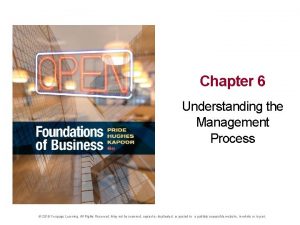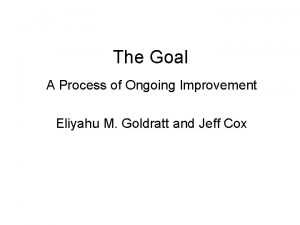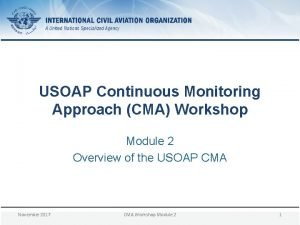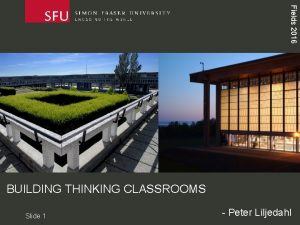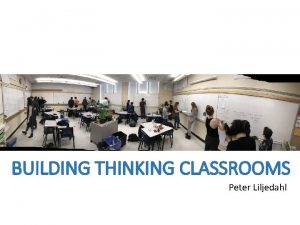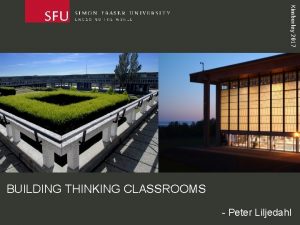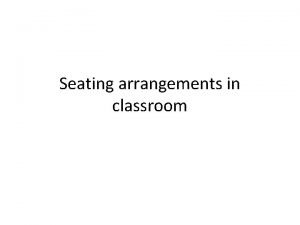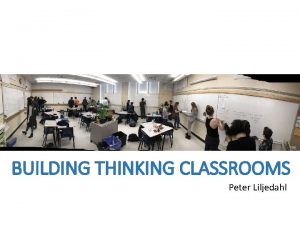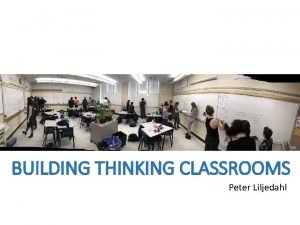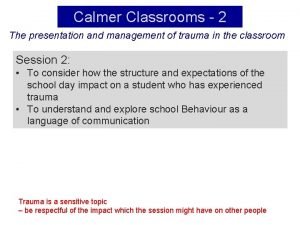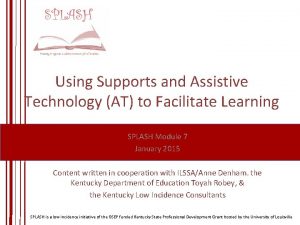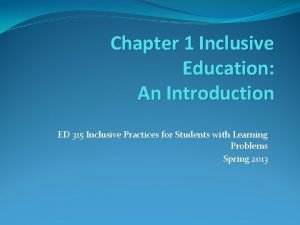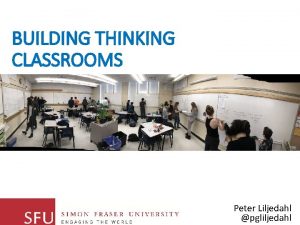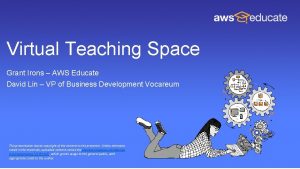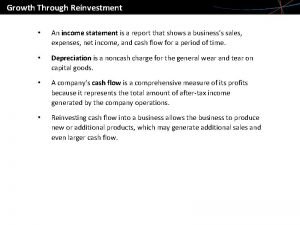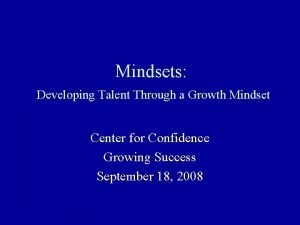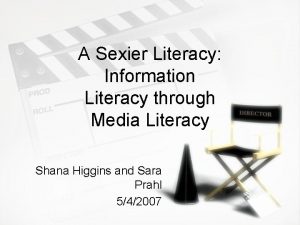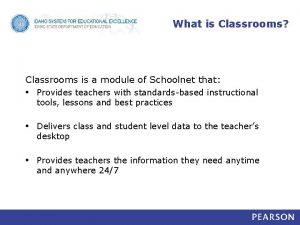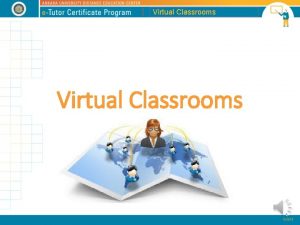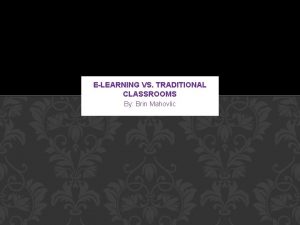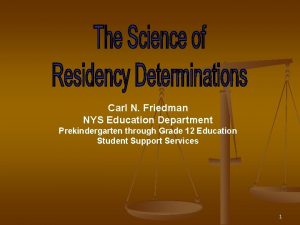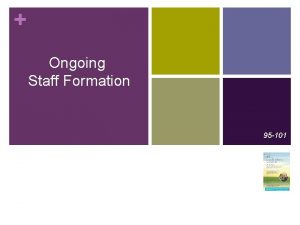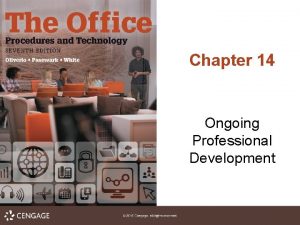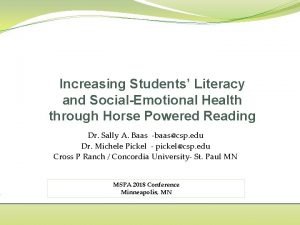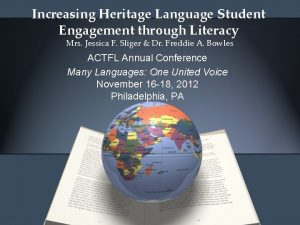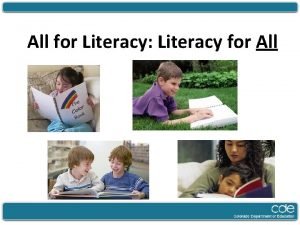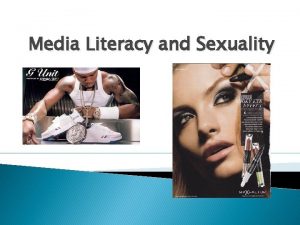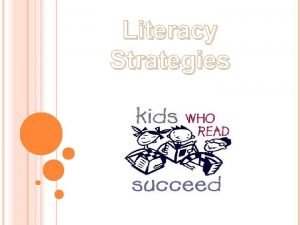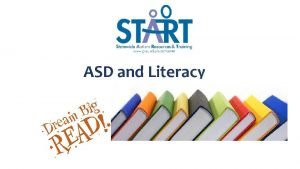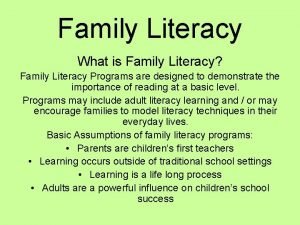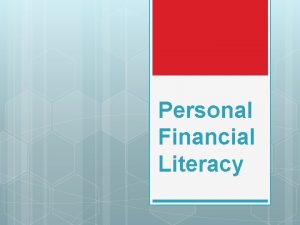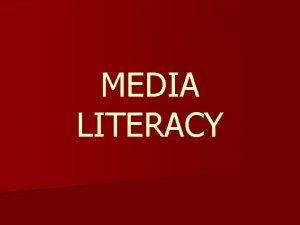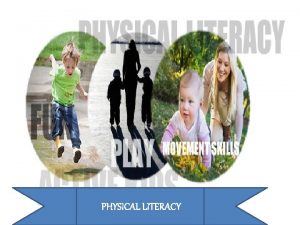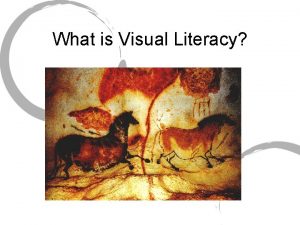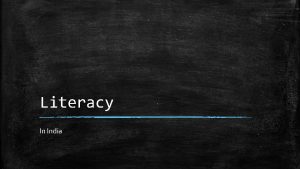Increasing Literacy Growth in Prekindergarten Classrooms Through Ongoing











































- Slides: 43

Increasing Literacy Growth in Pre-kindergarten Classrooms Through Ongoing Staff Development Priscilla Griffith Belinda Biscoe Debra Corey Ruth Ann Ball Susan Kimmel Patricia Winters University of Oklahoma Go Sooners!

All information and materials presented are the property of the University of Oklahoma. This presentation is available online at http: //faculty-staff. ou. edu/G/Priscilla. L. Griffith-1/

Just Like Me • I am excited to be at the 14 th European Reading Conference in Zagreb, Croatia. • I love to dance. • I have never been to Muleshoe, Texas. • I want to visit China. • I have dogs for pets.


• • • I love gardening. I believe all children can learn to read. I want everyone to have the gift of literacy. Reading is one of my favorite things. Boating and skiing excite me as does anything related to the out of doors.

United States Department of Education Early Literacy First Grant • Focus: Pre-K 3 and 4 year olds • Purpose: – Create early childhood centers of excellence – Prepare young children to enter kindergarten with necessary skills to ensure school success

Oklahoma P. R. I. D. E. Preparing Readers and Initiating Developmental Excellence • Create language and literacy rich classroom environments • Integrate curriculum, activities and materials into classrooms and family literacy practices • Assess literacy learning • Build partnerships to support the transition of all children into formal classroom instruction • Support family literacy • Provide research-based sustained professional development

Training Effectiveness* The degree of proficiency attained in knowledge, skills, and application. Mid High Low Very Low High Low Middle Very Low High High *From Bruce Joyce and Beverly Showers

Research-Based Sustained Professional Development • Formal study • Oriented towards improvements in curriculum and instruction • Continuous examination of student learning • Coaching with theory, practice, and demonstration are necessary for classroom implementation Joyce and Showers, 2002

Our Schools Oklahoma PRIDE Comparison Cohort Public Schools Private Child Care Year 1 WW L A LK C PSC 1 PSC 2 PSC 3 CC 1 CC 2 Year 2 PQ L A LK C PSC 1 PSC 2 PSC 3 CC 1 CC 2 Year 3 PQ L A C C PSC 1 PSC 2 PSC 3 CC 1 CC 2

Our Children - Language Oklahoma PRIDE 129 Comparison % Tested in Spanish 48% 63% Total N at Post-Test 88 79 % Tested in Spanish 43% 67% Total N at Pre-Test 105

Our Children - Age Pre-Test 3 -yearolds 4 -yearolds or older Post-Test OK PRIDE Comparison 13 7 10 5 116 98 78 74

Our Families Reports of Parents PRIDE Compare Percentage of parents reporting language spoken at home as: Spanish 52% 62% English 48% 38% Percentage of parents reporting their ethnicity as: Hispanic 64% 90% White 21% 7% Other 15% 3% Spanish 49% 75% English 51% 25% Percentage of parents responding to the survey in:

Reports of Parents PRIDE Compare 63% 90% Percentage of parents reporting less than a high school education: 36% 64% Percentage of parents who report having a high school education: 38% 27% Percentage of people reporting having an annual income of $21, 000$25, 000 or less

Project Development • Year One – Physical transformation of classrooms – Initiated literacy classes – Learning to mentor • Year Two – Implemented spiral curriculum of literacy classes – Learning to develop portfolios • Year Three – Focus on examining student work to plan instruction

Three C’s of Professional Development • Community – Professional development classes – Examine student learning • Curriculum Content: Assessment and Instruction of Oklahoma P. R. I. D. E Benchmarks – – – Oral language Phonological awareness Print concepts Alphabet knowledge and writing Listening comprehension • Coaching – Implementing instructional strategies

Structure of Professional Development Classes • Two groups: certified and non-certified teachers • Classes off campus • Classes two times each month for 3 hours • Literacy instructor • Literacy mentors attend

Content of Professional Development Classes • • • • Portfolios and Assessment Observations and Anecdotal Notes Oklahoma PRIDE Literacy Benchmarks Oral Language Phonological Awareness Environment/Classroom Management At-Risk Child Language Development Alphabet Knowledge Comprehension Concepts of Print Teacher-Child Interactions Home Visits Family Literacy Nights Door to Discovery Curriculum

Project Evaluation • Classrooms – Before and after photos • Teachers – Concept Maps – ELLCO: Early Language and Literacy Classroom Observation – Focus Groups • Students – TELD: Test of Early Language Development – PALS: Phonological Assessment Literacy Screening • Parents – Literacy Activities Survey

Changing the Physical Environment

Transforming a disorganized environment


Setting up Centers Dramatic Play Writing Library

Concept Maps • Voltz, 2004 (Action in Teacher Education, v. 27 # 3) • Rated maps for variation and quantity – Variation = number of categories represented in the map – Quantity = total number of ideas

Concept Maps Early Literacy


Early Language and Literacy Classroom Observation • Literacy Environment Checklist – Book Use and Availability - 20 points – Writing Materials and Display – 21 points • Classroom Observation Protocol – General Classroom Environment – 30 points – Language and Literacy Curriculum – 40 points • Literacy Activity Rating Scale – Book reading – 8 points – Writing – 5 points

ELLCO Literacy Environment Classroom Observation Checklist Protocol Book Use Writing Materials Literacy Activity Rating Scale Classroom Curriculum Environ Book Reading Writing Baseline - February 2004 PRIDE 12. 30 8. 30 17. 80 22. 70 4. 20 2. 20 COMPARE 11. 00 7. 00 15. 90 16. 00 3. 80 2. 80 End of Year 2 – May 2005 PRIDE 19. 20 18. 20 23. 30 31. 50 6. 70 3. 80 COMPARE 12. 30 10. 30 16. 50 25. 50 4. 50 2. 30

Focus Groups • Accomplishments – Professional growth – Focus of the program on their roles as professionals – before the program Pre-K teachers were “considered by some to be babysitters but now they were using researchbased teaching principles that can be measured and validated” – Provided roadmap for meeting state standards

• Benefits – Access to resources/research-based, developmentally appropriate instructional strategies – Mentor support – Professional development classes – Progress of children – Credit towards CDA – Interact with other teachers – Peer support – Opportunity to attend professional conferences

• Challenges/Concerns – Letting go of old curriculum and ways – Over-emphasizing literacy – Leaving their assistant alone with their class in order to attend professional development classes – Having resources to sustain parent activity component after the Oklahoma PRIDE program ends – More modeling of different types of classroom instruction by their mentor

TELD • TELD: Test of Early Language Development – Administered in English only – Not normed on our population – Assesses English language learning children need for initial success in school

PALS/AMIGOS • • Rhyme Awareness Beginning Sound Upper-Case Alphabet Lower-Case Alphabet Verbal memory Print Knowledge Concept of Word Name Writing

PALS/AMIGOS Results • All scores for both groups (PRIDE and Comparison) were significantly different from pre-test to posttest. • There was a statistically significant difference between groups on rhyme awareness.

Literacy Activities Survey PRIDE Comparison Activities Parent Does with Child – Percent Reporting Pre. Test Post. Test Writing notes to teacher 5 17 58 8 21 62 3 11 35 3 21 49 34 80 22 52 83 29 16 76 9 21 79 13 Writing stories with child Helping with homework Going to the library Teaching child letters/words Reading directions cooking/projects

PRIDE Comparison Activities Parent Does with Child – Percent Reporting Pre. Test Post. Test Writing letters/cards 30 16 29 31 37 39 18 47 30 53 26 7 20 18 25 34 18 27 18 28 Making signs and letters Reading menus at restaurants Reading labels at grocery stores Reading signs and billboards

OBSERVATION PLANNING REFLECTION STAFF DEVELOPMENT ASSESSMENT INSTRUCTION The Continuous, Recursive, and Interactive Process of Progress Monitoring

Data Collection Data Aggregation Systematic Assessment Observation Tasks Work Samples Planning and Reflection using Portfolios Instruction Oklahoma P. R. I. D. E. Progress-Monitoring Plan





Thank you for attending our presentation. Questions? Pgriffith@ou. edu Bpbiscoe@ou. edu
 Cyber literacy for the digital age
Cyber literacy for the digital age Similarities of media literacy and technology literacy
Similarities of media literacy and technology literacy Medium in mil
Medium in mil People in media and people as media differences
People in media and people as media differences The goal boy scout hike
The goal boy scout hike Ongoing search consumer behavior
Ongoing search consumer behavior Construction work ongoing
Construction work ongoing Initial planning nursing
Initial planning nursing Ongoing or on-going
Ongoing or on-going Ongoing professional practice evaluation template
Ongoing professional practice evaluation template Focus or ongoing assessment
Focus or ongoing assessment Nursing process model
Nursing process model Ongoing assessment early childhood
Ongoing assessment early childhood Chapter 6 understanding the management process
Chapter 6 understanding the management process The goal: a process of ongoing improvement
The goal: a process of ongoing improvement Ongoing monitoring
Ongoing monitoring Longer action in progress now example
Longer action in progress now example Building thinking classrooms
Building thinking classrooms Peter liljedahl
Peter liljedahl Peter liljedahl building thinking classrooms
Peter liljedahl building thinking classrooms Classroom seating arrangement
Classroom seating arrangement Peter liljedahl thinking classrooms book
Peter liljedahl thinking classrooms book Bringing the universe to america's classrooms
Bringing the universe to america's classrooms Position paper global classrooms
Position paper global classrooms Thinking classroom peter liljedahl
Thinking classroom peter liljedahl Calmer classroom
Calmer classroom Assistive technology in classrooms
Assistive technology in classrooms Inclusive chapter 1
Inclusive chapter 1 Peter liljedahl building thinking classrooms
Peter liljedahl building thinking classrooms Vocareum aws educate
Vocareum aws educate Growthchain
Growthchain Neoclassical growth theory vs. endogenous growth theory
Neoclassical growth theory vs. endogenous growth theory Primary growth and secondary growth in plants
Primary growth and secondary growth in plants Organic growth vs inorganic growth
Organic growth vs inorganic growth Plant growth index
Plant growth index Chapter 35 plant structure growth and development
Chapter 35 plant structure growth and development Eudicot
Eudicot Geometric exponential growth
Geometric exponential growth Growth through reinvestment
Growth through reinvestment Breaking church growth barriers
Breaking church growth barriers Growth through reinvestment
Growth through reinvestment Growth mindset cartoon
Growth mindset cartoon Furcation dental definition
Furcation dental definition Tangential sawing advantages
Tangential sawing advantages




